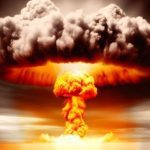 Creepy
Creepy  Creepy
Creepy  Technology
Technology 10 Scientific Breakthroughs of 2025 That’ll Change Everything
 Our World
Our World 10 Ways Icelandic Culture Makes Other Countries Look Boring
 Misconceptions
Misconceptions 10 Common Misconceptions About the Victorian Era
 Mysteries
Mysteries 10 Strange Unexplained Mysteries of 2025
 Miscellaneous
Miscellaneous 10 of History’s Most Bell-Ringing Finishing Moves
 History
History 10 Great Escapes That Ended Right Back in Captivity
 Weird Stuff
Weird Stuff 10 Fascinating Things You Might Not Know About Spiders
 Food
Food 10 Everyday Foods You Didn’t Know Were Invented by the U.S. Military
 History
History 10 Odd Things Colonial Americans Kept at Home
 Creepy
Creepy 10 More Representations of Death from Myth, Legend, and Folktale
 Technology
Technology 10 Scientific Breakthroughs of 2025 That’ll Change Everything
 Our World
Our World 10 Ways Icelandic Culture Makes Other Countries Look Boring
Who's Behind Listverse?

Jamie Frater
Head Editor
Jamie founded Listverse due to an insatiable desire to share fascinating, obscure, and bizarre facts. He has been a guest speaker on numerous national radio and television stations and is a five time published author.
More About Us Misconceptions
Misconceptions 10 Common Misconceptions About the Victorian Era
 Mysteries
Mysteries 10 Strange Unexplained Mysteries of 2025
 Miscellaneous
Miscellaneous 10 of History’s Most Bell-Ringing Finishing Moves
 History
History 10 Great Escapes That Ended Right Back in Captivity
 Weird Stuff
Weird Stuff 10 Fascinating Things You Might Not Know About Spiders
 Food
Food 10 Everyday Foods You Didn’t Know Were Invented by the U.S. Military
 History
History 10 Odd Things Colonial Americans Kept at Home
10 Wildly Different Movie Takes on Nuclear War
The Cold War spawned more than fallout shelters and duck-and-cover drills. During that era when geopolitical tension hung over audiences like a mushroom cloud, filmmakers channeled the nuclear threat into art, satire, and spectacle. Some explored human frailty, others turned to monsters or absurdity, but all reflected the fears—and sometimes the dark humor—of the atomic age.
From the 1950s creature features to somber 1980s dramas, these ten films show how the nuclear nightmare played out across decades of cinema history.
Related: 10 Franchise Movies That Needed a Different Director
10 The Day the Earth Stood Still (1951)
This sci-fi classic was loosely based on a 1940 short story but reflected a new, postwar reality when adapted for the screen a decade later. In both plots, a strange craft appears in Washington, D.C., carrying a mysterious visitor, Klaatu, and a giant, all-powerful robot. However, in the film, they bring an ominous warning to Earth’s leaders: agree to use atomic energy responsibly or face annihilation.
The 1950s cultural climate influenced the production in concrete ways. Actor Sam Jaffe, cast as a mathematician with Einstein-like hair, was almost booted from the project after the pamphlet Red Channels alleged he had Communist ties. Studio head Darryl Zanuck let him finish shooting, but Jaffe would not appear on screen again for years.
The Production Code board also objected to Klaatu’s resurrection scene, declaring that “only God can do that.” The compromise: Klaatu explains that his revival is only temporary, since the power of life and death “is reserved to the Almighty Spirit.”[1]
9 Them! (1954)
One of the best 1950s creature features, Them! warned of the domestic threat posed by nuclear weapons—this time in the form of giant man-eating ants mutated by radiation from testing sites. The result was a hybrid of horror film, detective thriller, and cautionary tale.
Plans for a color movie in 3-D were abandoned as too expensive, and cost considerations drove major script changes. The story was moved from New York City to the desert Southwest, with the climax staged in the storm drains under Los Angeles to avoid the pricey rental of the Santa Monica Pier. Only one full ant was constructed. A second ant head was mounted on a boom and brought to life by a crew on a dolly using knobs and levers. Additional “ant extras” had only heads and antennae, moved by wind machines.
Despite the shortcuts, the special effects earned an Academy Award nomination. The flamethrowers used on screen were completely real—on loan from the U.S. Army and operated by World War II veterans.[2]
8 Godzilla: King of the Monsters! (1956)
A prehistoric creature awakened by American H-bomb testing first destroyed Tokyo in the Japanese film Gojira (1954). Its name combined the Japanese words for gorilla (gorira) and whale (kujira), suggesting immense power and size. The filmmakers originally wanted to use stop-motion animation but lacked time and expertise, so they created a rubber suit instead. Under the blazing studio lights, actor Haruo Nakajima sweated by the cupful and sometimes fainted.
The monster’s iconic roar was produced by dragging a resin-coated leather glove along a stand-up bass string and slowing the recording; its thundering footsteps came from a kettle drum beaten with a knotted rope. Two years later, an American distributor recut the film as Godzilla: King of the Monsters!
The runtime dropped from 96 minutes to 80 despite the addition of Raymond Burr as an American reporter recounting events. Although publicity claimed he spent two months in Japan, his role was filmed entirely in Hollywood in just six days, then spliced into the original footage.[3]
7 On the Beach (1959)
Unlike earlier low-budget films, On the Beach was a serious examination of people facing impending doom. Director Stanley Kramer, who had already produced such classics as High Noon (1952) and The Caine Mutiny (1954), assembled a star-studded cast. After a nuclear exchange wipes out the Northern Hemisphere, a U.S. submarine commander (Gregory Peck) takes refuge in Australia, joining Ava Gardner and Fred Astaire (in his first non-musical role) as they await the deadly cloud of radiation drifting toward them.
With no access to an American vessel, production used a British Royal Navy submarine based in Australia, where most filming occurred. To highlight its anti-war message, the movie premiered on the same date in more than 20 cities worldwide—including Berlin, Johannesburg, London, Melbourne, Paris, Tokyo, and Moscow, a first for an American film in the Soviet Union.
The U.S. government even distributed memos to embassies abroad offering talking points on nuclear disarmament and reassuring diplomats that “a nuclear conflict would not mean the end of the world.”[4]
6 Dr. Strangelove or: How I Learned to Stop Worrying and Love the Bomb (1964)
Director Stanley Kubrick took the 1958 novel Red Alert, about the possibility of an accidental attack, and made a dizzying 180-degree turn from earlier nuclear-war thrillers. Seeing dark absurdity in the scenario, Kubrick transformed it into a “nightmare comedy,” adding the bizarre title character and renaming others such as Col. “Bat” Guano and Gen. Jack D. Ripper, the unhinged commander who launches a strike on Moscow over paranoia about fluoride in drinking water.
The American government was not amused. Aerial footage shot over Greenland was reportedly confiscated after crews accidentally filmed a secret base. Without access to a real plane, Kubrick’s team built the B-52 cockpit set from a single published photograph. Peter Sellers improvised much of the dialogue for his three characters. When he dropped a fourth role, the gung-ho pilot Maj. “King” Kong was recast with Slim Pickens, who wasn’t told the film was a comedy. His flight crew included the big-screen debut of James Earl Jones—a rare portrayal of a racially integrated unit at the time.
After the assassination of President Kennedy, the movie’s release was postponed from December 1963 to January 1964. Sellers earned his first Oscar nomination, and Kubrick received three more for screenplay, direction, and Best Picture.[5]
5 Fail Safe (1964)
Similarities between Fail Safe and Red Alert—both involving a nuclear strike triggered by computer error—prompted a plagiarism lawsuit by the latter’s author. Stanley Kubrick encouraged the suit to protect his own Dr. Strangelove and ensure his satire reached theaters first. Columbia Pictures, which held the rights to both films, settled by releasing Kubrick’s version months earlier.
Denied military cooperation, the filmmakers relied on archival bomber footage. Interior scenes were filmed in a rented flight simulator at LaGuardia Airport, and replicas of the Pentagon and Strategic Air Command interiors were built on New York soundstages. The supposedly “computer-generated” world map of planes and explosions was actually hand-drawn animation projected onto the control-room screen.
As a safeguard, the closing credits reminded audiences: “The producers of this film wish to stress that it is the stated position of the Department of Defense and the United States Air Force that a rigidly enforced system of safeguards and controls ensures that occurrences such as those depicted in this story cannot happen.”[6]
4 Planet of the Apes (1968)
Before it spawned sequels, spinoffs, and reboots, Planet of the Apes began with Pierre Boulle’s 1963 French novel. Charlton Heston championed the adaptation, playing an astronaut who crash-lands on a world where apes rule over humankind. The Twilight Zone’s Rod Serling helped develop the screenplay and introduced the famous Statue-of-Liberty ending—his own twist revealing a nuclear-ravaged Earth.
More than 80 makeup artists and nearly 20% of the film’s budget went into creating the simian characters, earning makeup designer John Chambers an honorary Academy Award. Actors who spent three hours in the makeup chair had to sip lunch through straws, and smokers used long holders to protect their prosthetics.
Even secrecy was strict: no publicity stills were released in advance, and actors were shuttled to locations by helicopter to prevent public sightings in costume.[7]
3 A Boy and His Dog (1975)
Based on Harlan Ellison’s novella, A Boy and His Dog was billed as an “R-rated, rather kinky tale of survival.” Its prologue sets the tone: “World War IV lasted five days. Politicians had finally solved the problem of urban blight. 2024 A.D.” A young man (Don Johnson) and his telepathic dog—the smarter of the pair—traverse a desolate wasteland, searching for sex and food. They stumble upon a strange underground colony that plans to use the teenager to replenish its breeding stock before killing him.
The black comedy was produced independently for about $400,000, with only a few recognizable names such as Jason Robards Jr. and Tiger, the dog from The Brady Bunch. Writer-director L.Q. Jones used much of Ellison’s dialogue, and the author was generally pleased with the film—except for the last line, which made the grisly ending more explicit when the young man chooses his starving dog over the woman escaping with them.[8]
2 Testament (1983)
This adaptation of the short story “The Last Testament” was originally produced for PBS’s American Playhouse, but its quality earned a theatrical release on November 4, 1983. Unlike earlier, action-heavy films, it focused on a community’s quiet struggle to survive after an unseen nuclear strike destroys major cities.
Jane Alexander earned an Oscar nomination as a mother desperate to hold her family together in a rural California town cut off from the outside world. As neighbors succumb to radiation poisoning, flashbacks following their deaths were shot with a handheld Super 8 camera to mimic home movies of life before the bomb. The film’s intimacy and lack of special effects made it one of the most emotionally realistic depictions of nuclear aftermath ever filmed.[9]
1 The Day After (1983)
Only weeks after Testament, an estimated 100 million Americans watched The Day After on network television. Unlike its quieter counterpart, this ABC TV movie depicted the events before, during, and after a nuclear strike on the United States, focusing on survivors in Lawrence, Kansas. More than 2,000 residents served as extras, some paid $50 to shave their heads to simulate radiation sickness. Graphic sequences were deleted when the four-hour cut was reduced by half.
During the broadcast, ABC ran the film without commercials—no sponsors wanted the airtime. The network’s disclaimer read: “In its presentation, ABC has taken no position as to how such an event can be initiated or avoided.” Hotlines were opened to assist distressed viewers.
The program concluded with a live panel featuring scientist Carl Sagan, former Secretary of State Henry Kissinger, author Elie Wiesel, and former Defense Secretary Robert McNamara. As U.S.–Soviet relations slowly thawed, The Day After aired in the U.S.S.R. in 1987, completing its global cautionary loop.[10]








